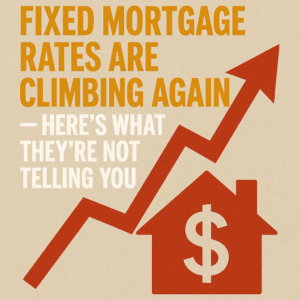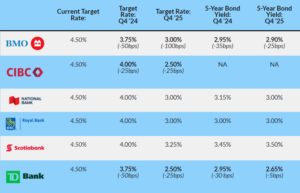As millions of Canadian homeowners face mortgage renewals in the near future, many are feeling the pressure of higher payments due to persistently high interest rates.
Advice for Homeowners Facing Mortgage Renewals According to the Canada Mortgage and Housing Corporation (CMHC), around 2.2 million mortgages are set to renew in 2024, representing over 45% of all mortgages in Canada. While those with variable-rate mortgages have already felt the impact of rising rates, fixed-rate mortgage holders will soon experience a significant increase in their payments. This has caused considerable anxiety among homeowners, with 76% of those facing renewal in the next year expressing concern, a 10% rise from last year, according to Mortgage Professionals Canada.
Katy Mackenzie, a mortgage expert with TMG The Mortgage Group, notes that those who locked in historically low rates are now confronting much higher ones. Unfortunately, no one is likely to avoid the effects of this shift.
If the prospect of higher payments feels overwhelming, there are several strategies you can use to ease the financial strain:
1. Start Planning Early David van Noppen, a mortgage agent and owner of More Than Enough Financial, emphasizes the importance of early preparation. Beginning the renewal process well in advance can provide more options, such as gradually increasing your payments a few months before renewal. This can help you adjust to the higher payments more smoothly.
Mackenzie advises reaching out to your lender as soon as possible if you anticipate difficulty with the higher payments. Starting the conversation early allows you to negotiate a payment plan that works for both you and the lender, reducing financial stress.
2. Communicate with Your Lender If you’re struggling to manage your payments or foresee difficulties ahead, it’s essential to contact your lender promptly. Both Mackenzie and van Noppen stress that lenders are more understanding when you proactively address potential payment issues. Depending on your situation, lenders might offer options like payment deferral, loan restructuring, or re-amortization.
3. Consider a Mortgage Broker With rising interest rates making mortgages more expensive, van Noppen has observed that more homeowners are shopping around for the best deals. While some attempt to find deals on their own, the expertise of a mortgage broker can be invaluable. Over a third of Canadians now use a mortgage broker, with the percentage even higher among first-time buyers and recent purchasers. A broker can help you navigate the complexities of the mortgage market and secure the best deal for your situation.
4. Explore Mortgage Relief Options If you find yourself at risk of default, it’s crucial to know the mortgage relief options available to you. Under the Canadian Mortgage Charter, you may be eligible for measures such as:
- Prepaying and re-borrowing: If you’ve made extra payments, you may be able to borrow back the amount you prepaid.
- Skipping a payment: Some financial institutions allow you to skip a certain number of payments each year.
- Credit insurance claims: If you lose your job, become critically ill, or are disabled, you may qualify for a credit insurance claim that covers some or all of your mortgage payments.
- Mortgage payment deferral: This option allows you to pause your payments for a set period, though you’ll need to repay the deferred amount later.
5. Adjust Your Budget If you’re struggling to cover your higher mortgage payments, start by analyzing your cash flow to identify areas where you can cut expenses. Van Noppen suggests cutting out unnecessary luxuries like extra subscriptions or dining out. If you still can’t make ends meet, you may need to consider generating additional income or making more significant lifestyle changes.
6. Consider Selling or Downsizing If you can’t find enough money to cover your mortgage payments after cutting expenses, it may be time to consider selling your home and downsizing to a more affordable property. This could involve moving to a smaller home or relocating to a less expensive area.
7. Use Your Home Equity If you’ve paid off part or all of your mortgage, tapping into your home equity can provide the cash you need. Options include:
- Cash-out refinancing: This involves replacing your current mortgage with a larger one, with the difference paid to you in cash.
- Home equity line of credit (HELOC): A HELOC allows you to borrow against your home equity, offering flexibility in managing your finances. However, van Noppen cautions that this option should be used carefully to avoid accumulating unmanageable debt.
8. Seek Financial Counseling If you’re struggling with higher mortgage rates and financial stress, consider seeking financial counseling. A financial counselor can help you manage your money more effectively and create a plan to stay on track. Van Noppen also highlights the value of having someone to hold you accountable, which can increase your financial awareness and help you make informed decisions.
Ignoring financial problems won’t make them go away. Taking proactive steps now can help you navigate the challenges of mortgage renewal with greater confidence.

